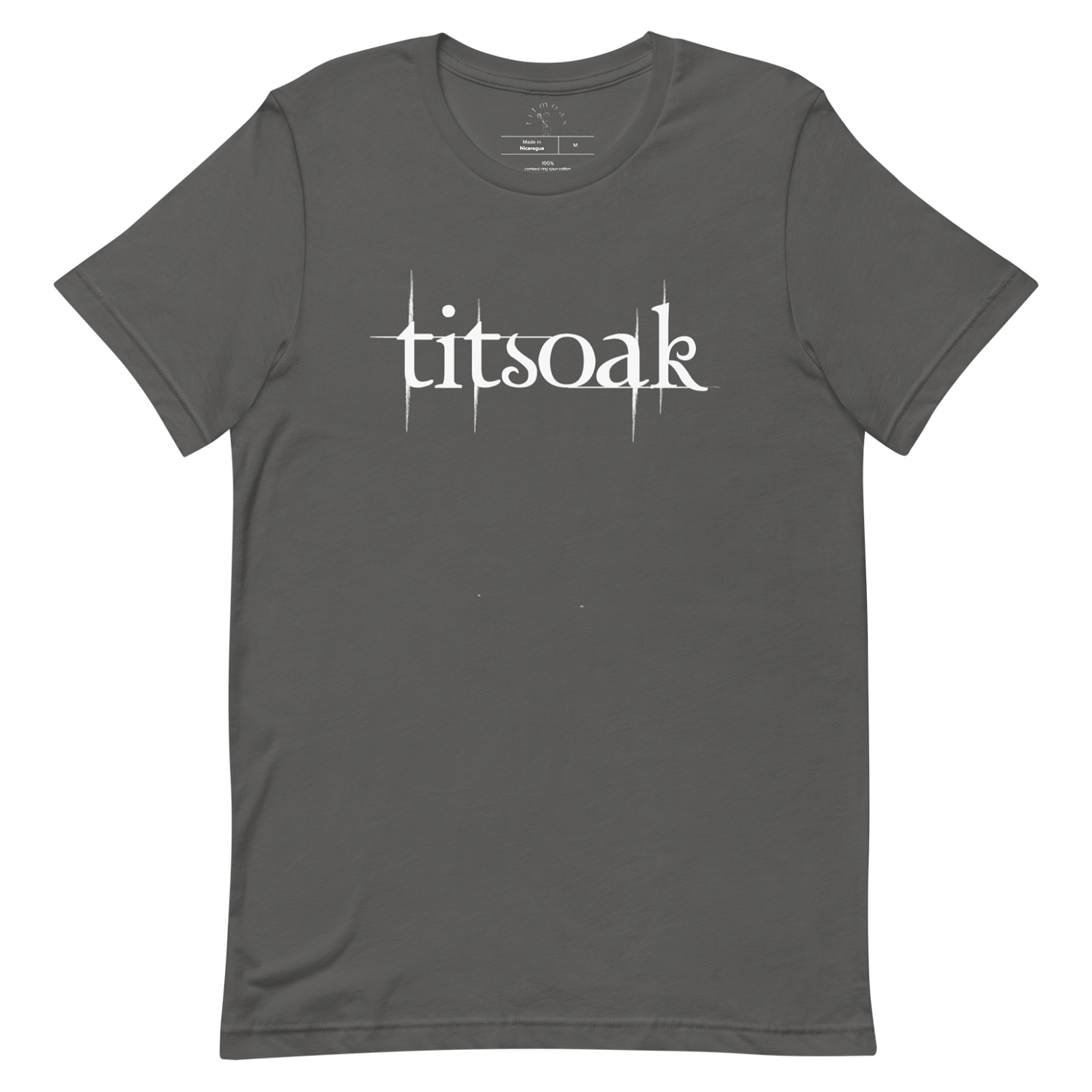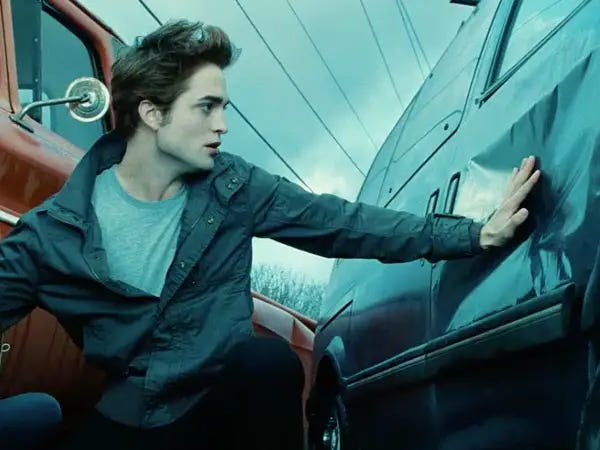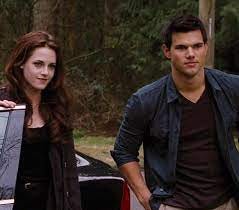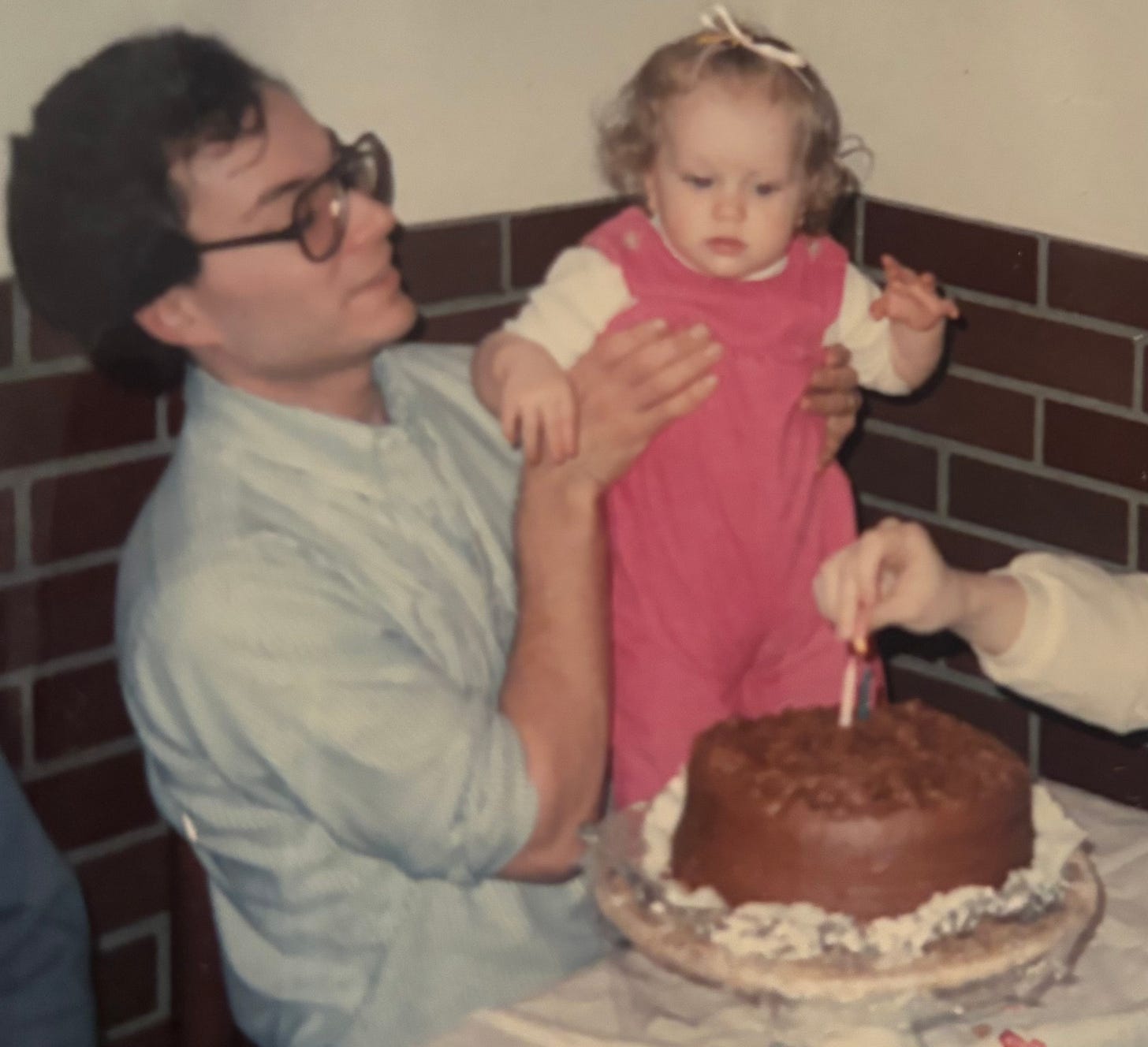Hello 🌊
Ten elements for every damn scene🎬
Applying the ten elements to a shocking example 🧛
Questions for us? 🙀
Next week 👀
Lyssa’s writing corner ✨
Anna’s writing corner 👻
Hello 🌊
Welcome back, TTSers! This week’s episode is a topic we all can use: the anatomy of a scene. What are the elements every scene should contain—and why?
We came up with this episode’s title during our brainstorming sessions between seasons… and discovered an abundance of resources also called The Anatomy of a Scene, like this New York Times video series and this talk by Lisa Cron, author of Story Genius. Since we’re fans of neuroscience-informed approaches to craft, we took the plunge and checked out the Cron talk, which is the framework for most of the advice we’re giving today. So buckle up, and get ready to learn!
Ten Elements for Every Damn Scene 🎬
Since recording, we both tried using these ten elements for each of the scenes we worked on. Seriously, folks, it blew our minds. Right away, our writing felt much closer to the emotional thread, which of course, is the most important thread. Lyssa was also able to cut some words, because these elements help cut to the heart of a scene. Your turn.
Set your scene: Make sure you include who is here, where us here, how much time has passed since the previous scene, and why we’re here. Scenes don’t work unless we’re grounded in them, so try and include this information right up front.
Make sure your scene affects your MC’s overarching agenda: If it doesn’t, don’t write it. It has to impact the overall story—especially your MC’s emotional arc. If the scene does not apply pressure to this emotional arc, it’s not working.
What your MC wants to happen: You should know the outcome your MC desires while entering the scene. This can be communicated directly or indirectly.
What your MC expects to happen: Lisa Cron’s definition of story is that it’s what happens to your main character when their expectations are not met. And that what happens should be the EMOTIONAL response—the thoughts, feelings, and behaviors that occur because of subverted expectations. Put these expectations right on the page.
Stakes, aka what your MC is afraid might happen: What could they lose, emotionally, in this worst-case scenario? The surface level answer will be about your external plot, but the real gold should be about your emotional plot.
If there’s external conflict, ensure there’s also internal conflict: You can have a successful scene based solely on internal conflict, but you can’t have one based solely on external conflict. Any external conflict should cause friction with your internal (emotional) conflict. Lean into that!
Force your character to make a meaningful choice: Now we’re getting into the tougher ones. It’s one thing to tell us where we are, and it’s another to show us how your character is changing in each and every scene. The decision your MC makes might be something she doesn’t think on the page, but it’s embedded in her actions moving forward. It also might be indicative in what she’s not doing.
Put your MC’s thoughts ON THE PAGE as they struggle to make this choice: Your scene is pressing on that emotional arc, forcing your character to change in some incremental way, either closer toward their emotional goal or further away. Let us into their mind while they’re changing. This is where you can slip in some backstory, the past experiences that influence current decisions. Your reader needs to know WHY your MC makes a choice. Doing so allows us to stay in your character’s head, so we feel we ARE them.
Have your character realize something at the end of the scene (a-ha! moment). Okay, so you’ve pressed on your emotional arc and forced your MC to make decisions. You’ve let us into their thought process. So what have they learned as a result of this scene? Make sure the conclusion they draw is specific to the emotional journey. It’s less about what they do and more about WHY they do it. Having tried this between recording the episode and writing this substack, it’s hard. It really makes every scene count, and it’s possible that some of our scenes are not exactly necessary. Yet.
Make sure your scene is consequential to the rest of the story. Each scene should play forward in a meaningful way. Let your reader in on exactly where we’re going. Give them enough information to guess what’s next, even if they guess inaccurately. This is the key to one of our favorite pieces of craft advice: making your reader WORK.
**Bonus**: Check on those side character. See if they too, are acting in accordance with their emotional arcs. When we’re trying to make a specific plot happen, we sometimes use side characters as “scene puppets” according to Cron. These scene puppets do whatever the author needs them to do in order to move the story forward, even if it’s inconsistent with how they acted a few chapters earlier. Give your characters arc. Give them depth. And let that determine their actions.
Phew! We made it. See how tricky those got on the end? The key, in our opinion, is to remain faithful to your emotional arc. Don’t fall into the trap of answering these questions with your external plot. It’s all about the emotional journey.
Let’s cement this new knowledge with an example, shall we?
Using these ten elements with a shocking example 🧛
You’ll never believe which book we picked to help drive this home! Twilight! Huge shocker, we know!
To show this works for most scene, Lyssa flipped open her mass market paperback edition of Twilight and chose a random page. It’s the scene where Bella researches vampires, right after she learned the legends of the Cold Ones. Here we go!
Set your scene: Bella wakes up after a nightmare of Edward being a monstrous vampire. She takes a shower and sits down in front of her computer alone, to research vampires, as she’s trying to figure out if Edward could actually be one. Eventually, she gets frustrated and goes for a walk in the woods. Scene is set, no confusion over where we are and why.
Make sure your scene affects your MC’s overarching agenda. Bella’s emotional journey is about love. She’s disillusioned by her parents’ divorce and her mothers’ string of boyfriends, and she doesn’t feel special. But now, she’s caught the eye of a handsome boy who may or not also want to eat her. Figuring out if Edward is a vampire absolutely puts pressure on this emotional arc. Imagine opening yourself up to romance only to discover the first person you could yourself with might be a mythical monster. All the angst.
What your MC wants to happen: Bella wants to discover the truth about Edward’s supernatural strength. She’s hellbent on doing it, and dedicates her weekend to getting it right (and writing a paper on MacBeth that’s due Wednesday).
What your MC expects to happen: Bella EXPECTS to find some reasonable explanation for Edward’s supernatural qualities other than him being a vampire. She’s pragmatic.
Stakes, aka what your MC is afraid might happen. Bella is worried she could lose Edward, who is currently pushing her away as she is trying to uncover his secret. He’s not going to tell her, so she has to figure it out herself, and she fears that if she doesn’t, she’ll lose her chance with him. And she is very, very emo about that.
If there’s external conflict, ensure there’s also internal conflict: In this scene, there’s very little external conflict. It’s Bella alone in her Bella head, researching vampires and getting lost in the woods while she thinks, because she feels crazy even asking herself if Edward might be a vampire. And of course, whether or not Edward is a vampire (external conflict) places tension on the internal conflict about love. If she falls for this guy, and he’s secretly a vampire, that’s a pretty poor trajectory for a healthy relationship!
Force your character to make a meaningful choice. When Bella concludes that Edward is, in fact, a vampire, she must decide what she’s going to do, now that she knows the truth about him. This decision relies heavily on her emotional arc (love) and has consequences for the rest of the story. If Bella made a different choice, such as ignoring Edward rather than dating him, then Twilight would be a VERY different series.
Put your MC’s thoughts ON THE PAGE as they struggle to make this choice. Listeners, I give you Stephenie Meyers’ words.
“I forced myself to focus on the two most vital questions I had to answer, but I did so unwillingly. First, I had to decide if it was possible that what Jacob said about the Cullens could be true...And then the most important question of all. What was I going to do if it was true?”
There are paragraphs of THOUGHTS for each question, ranging from no way to hmm but they don't eat, don't go out in the sunlight, and have supernatural strength. Eventually, Bella walks us through what it'd be like to walk away from Edward, which she calls being "smart." But unfortunately, our girl is "gripped by the sudden agony of despair" as she considers never talking to Edward again.
And there you have it, folks: the reader now knows exactly WHY Bella believes he could be a vampire and WHY she chooses to continue her budding connection with Edward, even though he might eat her. Any actions she now takes will follow the logic we’ve been given.
Have your character realize something at the end of the scene (a-ha moment). While thinking in the woods, Bella recalls her nightmare the night before, about Edward being a vampire. And she realizes she wasn’t afraid OF him; she was afraid FOR him. “And I knew in that I had my answer. I didn’t know if there ever was a choice, really. I was already in too deep.” And that, friends, is Bella’s a-ha moment: it doesn’t matter if Eddie is a vamp; she’s already obsessed with him.

get it? GET IT?! (you can get it here and no this is not our merch but it should be, right?) Make sure your scene is consequential to the rest of the story. Again, Twilight would be unrecognizable if Bella didn’t figure out Eddie’s a vampire and decide to love him anyways. And once she does, Meyer lets us know exactly where we’re going. Once Bella has this realization, she’s calm and happy and able to focus on MacBeth homework. She is just waiting for the chance to speak to Edward, and she knows what she wants. But drama ensues, because the sun is shining the next day, so the Cullens aren’t at school.
**Bonus**: Check on those side character. See if they too, are acting in accordance with their emotional arcs. The only side character who makes an appearance here is Bella’s hot dad, as he’s learning to parent the “girl stuff” (the aughts. sigh). But he’s his pleasantly gruff, basketball loving self who is able to ask questions and figure out how to respond to his daughter’s request to go to Port Angeles.
And there you have it! This is a LOT of information, but we believe in you. Let us know how it works!
Questions for us? 🙀
We want to hear from you! Yeah, you! ALL of you! In coming weeks, we hope to answer listener questions about craft, writing block, past topics, future topics, unrelated struggles, literally anything. Hit the button below and send ‘em our way!
Next week 👀
Y’all, we did it. We talked Emily Taylor into teaching us about Big Ideas, the ones that make people go “ooh! I’d read that!” from a single sentence. We are so, so excited, because all of this craft talk is much more impactful when your idea gives everyone grabby hands. STAY TUNED!
Lyssa’s Writing Corner✨
One more week until I hand this baby in! I’m almost done with my act 3 revisions, courtesy of this episode. Seriously, once I added this checklist to the notes section of each chapter in Scrivener, I was able to cut to the heart of what I was trying to accomplish in each scene—and I found a few that didn’t serve any purpose other than being cute, eek. But now my act 3 has a heartbeat, and it makes enough sense to show it to my editor without hiding in shame for the rest of my life.
When I’m on a deadline like this, I really struggle to maintain balance. I’m not doing any better at balance this time around, but I’m learning to be less hard on myself for not exercising as much, or seeing friends, or going for as many walks (though Nessie still gets her walks in). I’m almost through it. And then I’ll be able to think about a new project for a while (and read, so if you have anything you’ve enjoyed lately, tell me!)
Anna’s Writing Corner👻
What if my writing corner contains no writing? That's the case this week as I yet again navigate life. However, I am in talks with a friend to create some accountability to put my butt in the chair. That will happen after my husband and I finish this small renovation in our house. With all that's happened, I needed a distraction project and painting two angry red walls a soothing green was exactly what the stress doctor ordered.
I guess this makes this not a writing corner, but the corner. I'll chill here with Eddie until next week.













Hi! I really loved this episode and I had a question. Not sure if this is a common thing, but I've gotten so into the habit of threading in external action, reaction, and internal action, reaction in scenes that I've realized I have no idea how to wrap them up in a resolution.
Like, once the plot train has started I know what to do, but how do I stop the plot threads in a way that doesn't feel too abrupt (which might compete with the climax in terms of tension) or too drawn out?
Long story short, would you be at all willing to do an episode on resolutions in the future? I would really appreciate it.
Thank you for all you do!